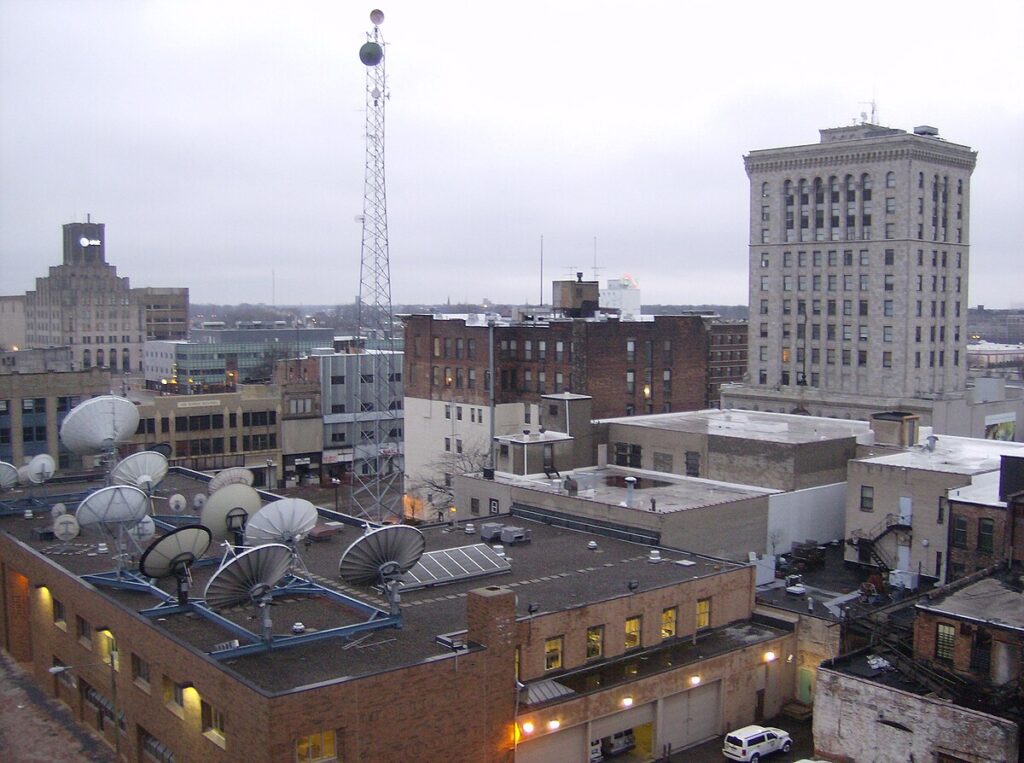
Moving to Saginaw, Michigan: A Comprehensive Relocation Guide
Considering moving to Saginaw, Michigan? This historic city offers exceptional affordability, healthcare presence, and comeback efforts. With approximately 44,000 residents in 2025 (metro 190,000+), Saginaw combines industrial heritage with resilience and Mid-Michigan’s regional hub character.
Demographic Profile to Consider If Moving to Saginaw:
Saginaw’s 2025 population is approximately 44,000 residents in Saginaw County in Mid-Michigan, 90 miles north of Detroit. The median age is around 34 years, with working families, healthcare workers, students, and diverse residents. The population is approximately 47% Black or African American, 43% White, 8% Hispanic, 2% other. Saginaw features industrial heritage, healthcare presence with major hospitals, Saginaw Valley State University nearby, and serves as a post-industrial Mid-Michigan city. The city attracts working families seeking extreme affordability, healthcare workers, students, and those believing in comeback potential. Saginaw appeals to those prioritizing affordability over conventional metrics and opportunity over polish. The community balances industrial legacy with healthcare growth, challenges with resilience, and maintaining determined character. Find trusted local services for moving, living, and working in Saginaw.Saginaw Relocation Directory
Cost of Living to Consider If Moving to Saginaw:
Saginaw offers exceptional affordability among Michigan’s lowest. Median home values range from $50,000 to $90,000 in 2025, among America’s most affordable cities though reflecting significant challenges. The median household income is approximately $32,000. Rental properties average $600 to $900 monthly. Michigan has flat income tax 4.25%. Property taxes are moderate though home values are extremely low. Overall cost of living is very competitive, making Saginaw highly attractive for working families with limited means, healthcare workers, and those seeking maximum Michigan affordability. The city provides tremendous value though challenges exist.
Economy and Job Market:
Saginaw’s economy includes healthcare, education, manufacturing, and services. Major employers include Covenant HealthCare (major regional hospital), Ascension St. Mary’s Hospital, Saginaw Valley State University, Great Lakes Bay Health Centers, remaining manufacturing, and government. Healthcare dominates employment as the growth sector. Education provides jobs. Some manufacturing remains. Typical industries include healthcare, education, manufacturing, and services. Wages reflect post-industrial levels though healthcare offers competitive compensation. The job market attracts healthcare professionals, educators, working-class residents, and those seeking Mid-Michigan employment.
Education:
Saginaw Public Schools serves city students. School quality varies dramatically with significant challenges requiring research. Saginaw Valley State University nearby provides higher education. The educational infrastructure presents challenges though SVSU provides college presence.
Recreation and Lifestyle:
Saginaw offers Saginaw Art Museum, Japanese Cultural Center and Tea House (unique attraction), Castle Museum, and Saginaw Bay waterfront access. The city features proximity to Saginaw Bay and Lake Huron (40 minutes), exceptional affordability enabling homeownership, Saginaw Spirit OHL hockey creating community pride, and authentic Mid-Michigan character. Residents enjoy extreme affordability unlike anywhere, Saginaw Spirit hockey, Japanese Tea House uniqueness, proximity to Saginaw Bay, healthcare employment stability, and opportunity for believers. The lifestyle emphasizes affordability enabling opportunity, resilience and community determination, Saginaw Spirit pride, healthcare sector growth, and choosing potential over polish. The four-season Michigan climate features cold winters and pleasant summers. The community values resilience following industrial decline, Saginaw Spirit hockey pride, healthcare sector as growth engine, Japanese Tea House treasure, Saginaw Bay access, and believing in comeback despite significant challenges. Living in Saginaw means accepting post-industrial character with significant urban challenges including high crime in areas, struggling schools necessitating extensive research or private options, economic challenges, some areas with blight, and ongoing difficulties while experiencing EXCEPTIONAL MICHIGAN AFFORDABILITY enabling homeownership impossible elsewhere, healthcare employment providing stability and growth, Saginaw Spirit OHL hockey, unique Japanese Tea House, Saginaw Bay proximity, and comeback determination where extreme affordability meets resilient community and Saginaw fights back defining Mid-Michigan’s most affordable option with opportunity for those believing in potential despite significant challenges.
Healthcare and Services:
Saginaw residents access comprehensive healthcare through Covenant HealthCare and Ascension St. Mary’s Hospital providing regional medical services. The hospital system is extensive and serves Mid-Michigan.
Transportation:
Saginaw is accessed via Interstate 675, U.S. Route 10, Interstate 75 (nearby), and various corridors. MBS International Airport (nearby) provides commercial service. Most residents use personal vehicles. Typical travel times to Detroit are 1.5 hours.
Conclusion:
Moving to Saginaw in 2025 offers exceptional Michigan affordability with healthcare presence, comeback efforts, and resilient community. The city’s combination of extreme affordability, healthcare employment, and determined character makes it ideal for working families, healthcare workers, and believers seeking Michigan’s most affordable destination where resilience meets opportunity and Saginaw fights back defining comeback determination in Mid-Michigan.

